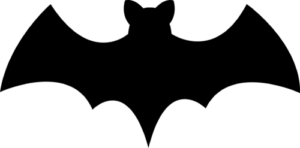Going Batty on your House


Bats are beneficial animals but we do not want them roosting in or on our homes.
White-nose syndrome (WNS) is the fungal disease that is having a devastating affect on bats in North America. The name come from the white staining on the noses from the fungal growth. It affect the bats during hibernation.
In March 2016, the first case of the disease was confirmed in Washington, about 30 miles east of Seattle.
The disease is primarily spread by bat-to-bat contact, but bats can also contract the disease from an area where the fungus is present. White-nose syndrome does not pose a threat to humans, pets or other animals.
From Washington Department of Fish and Wildlife-
Washington bat species eat vast quantities of night-flying insects, including moths, beetles, mosquitoes, termites, and flies.
Most bats hunt in flight or hang from a perch and wait for a passing insect to fly or walk within range.
The pallid bat captures crickets, grasshoppers, spiders, scorpions, and other prey on trees or on the ground.
Bats locate flying insects primarily by using a radar system known as “echolocation.” The bat emits high-pitched sound waves that bounce back to the bat when they strike a flying insect. A b at locates prey by interpreting the reflected sounds.
Bats often capture insects when flying by scooping them into their tail or wing membranes, and then putting the insects into their mouth. This results in the erratic flight most people are familiar with when they observe bats feeding in the evening.
Bats will fly 1/2 to 6 miles from their roost to a feeding site, using temporary roost sites there until returning to their main roost.
A bat captures an insect by scooping it into its tail and wing membranes
Bats often capture insects when flying by scooping them into their tail or wing membranes, and then putting the insects into their mouth.
https://wdfw.wa.gov/species-habitats/living/species-facts/bats#facts


